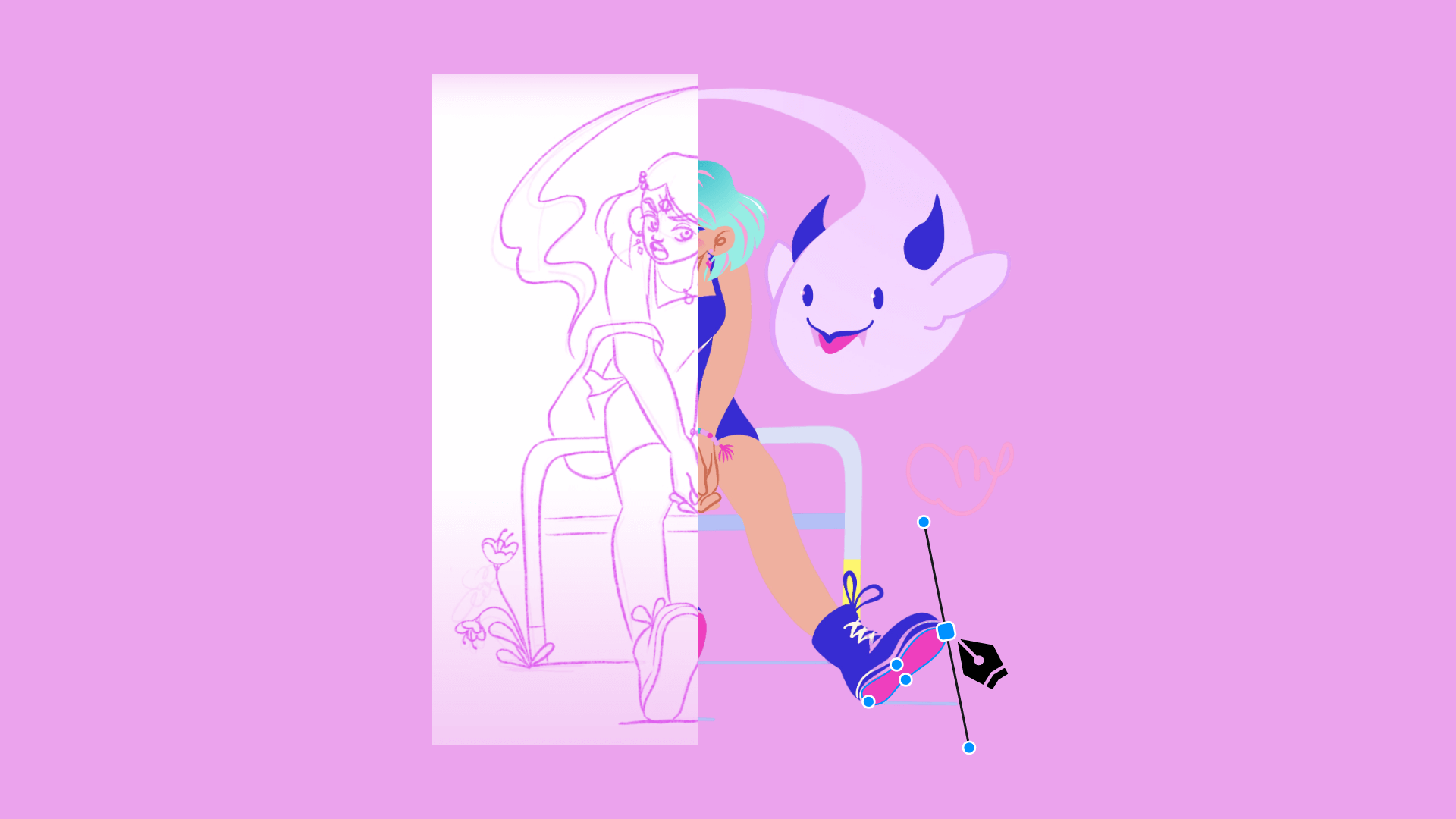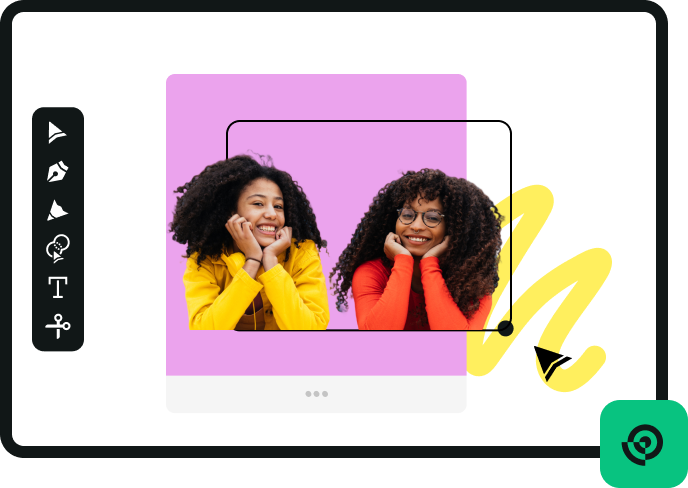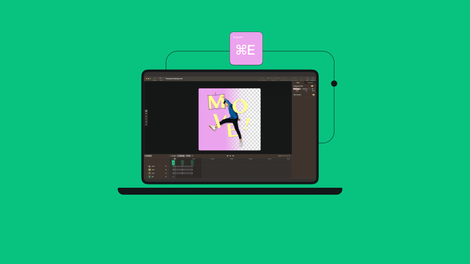Some characters are impossible to forget.
Usually, the character's design and concept art tell a story before the character ever moves or speaks. Being memorable and striking a chord with audiences separates characters from simple illustrations.
Full disclosure: The process of designing a character isn't easy. Sometimes, it can seem simple at first glance. Iconic characters like Mickey Mouse or Eric Cartman from South Park are as simple as they get. But that doesn't mean they're easy to create.
Jumpstart your ideas with Linearity Curve
Take your designs to the next level.
Much time and effort go into simplifying a character and making it as effective as possible. But building characters can also be complex. Think of Final Fantasy (1987) and its detailed universe—what goes into designing those vivid characters?
For this article, we asked illustrator @maddastic about her creative process when designing characters.
In collaboration with her, we also created a video that shows you the tools and techniques to design a character using Linearity Curve. Watch the full video below:
Also, don’t miss the character development theory explained below. But first:
What’s character design?
Character design creates and illustrates a persona that fits a particular visual story.
Characters are often used on screen, like cartoons, movies, and games, but they’re also designed for books, either mangas, comic books, illustrated children’s books, or graphic novels.
That is why character design is so important to know as an artist. It touches on so many facets of the design creative process that you are bound to elevate all your technical skills and art style to the next level.
Creating a memorable character means creating a design about personality, attitude, and relatability.
Users should be able to identify themselves with it, adding a personal touch As much as you want to create characters you love, you also need to create them for your audience. This might mean respecting certain product or project requirements and creative ideas.
As we move on to the fundamentals of character concept design, you’ll notice how personality, story-telling, and memorability are the most important aspects of character design.
Now, let us dive into seven helpful tips to inspire your character creation journey.
1. Start with research
If you’ve read any of our "how to" articles, you know this will be your first step in any type of creative content endeavor.
Pre-production is, more often than not, the most important step in your creative process. That’s when you understand what character archetype you’ll create and get those creative juices flowing.
Study character designs and the principles of animation from various sources, and analyze why you like some of their aspects in particular. Your mind is like a visual library; the more sources you have, the better.
And don’t stop there. You’re surrounded by many amazing characters in your daily life: friends, family, and political figures. Think of how they walk, talk, dress, and gesture, and apply some method theory to your character creation.
Once you’ve researched, put all your inspirational sources together on a mood board to further guide your process.
2. Remove yourself from references
At the next stage, taking a step back from everything you’re researching is important. You don’t want to commit one of the biggest character design crimes of all: copying what other character designers have done before.
Some professional artists prefer not to have a mood board at all, just because that can influence their process too much. Remembering your reference from your memory might spark more creativity on the way.
Focusing on what’s in front of you and not around you is oftentimes necessary in the design world. There are countless artists out there, constantly bouncing ideas off one another.
3. Understand the consumer
Character design isn’t as simple as just sitting down and sketching characters for fun.
The end user ultimately sets the requirements. Although it may feel like your client is calling the shots, they wouldn't create a product without knowing their market.
With that said, the product wouldn’t be effective without considering what the user needs and wants.
There are many angles you can look at before designing a character. And your illustration depends on what your character's idea goals are. Is it for an animated series? Is it for a manga? For a children’s book? Are you creating video game characters?
It’s almost like creating a product in itself. So, you need to ask yourself these extra questions:
- Who is your end user?
- What’s the context in which your character will be used?
- What’s the distribution channel of your character?
The latter is important in knowing how much detail and the core features that should go into creating your designs.
There’s a reason why Cartoon Network characters are so simplified with clean lines, while Disney characters are more complex and detailed. It’s not that Cartoon Network is lazy (other’s words, not ours!), it’s just a matter of balancing the key features of what a character needs to represent, what level of detail the story medium affords, and how fast you can tell the story with as few resources as possible.
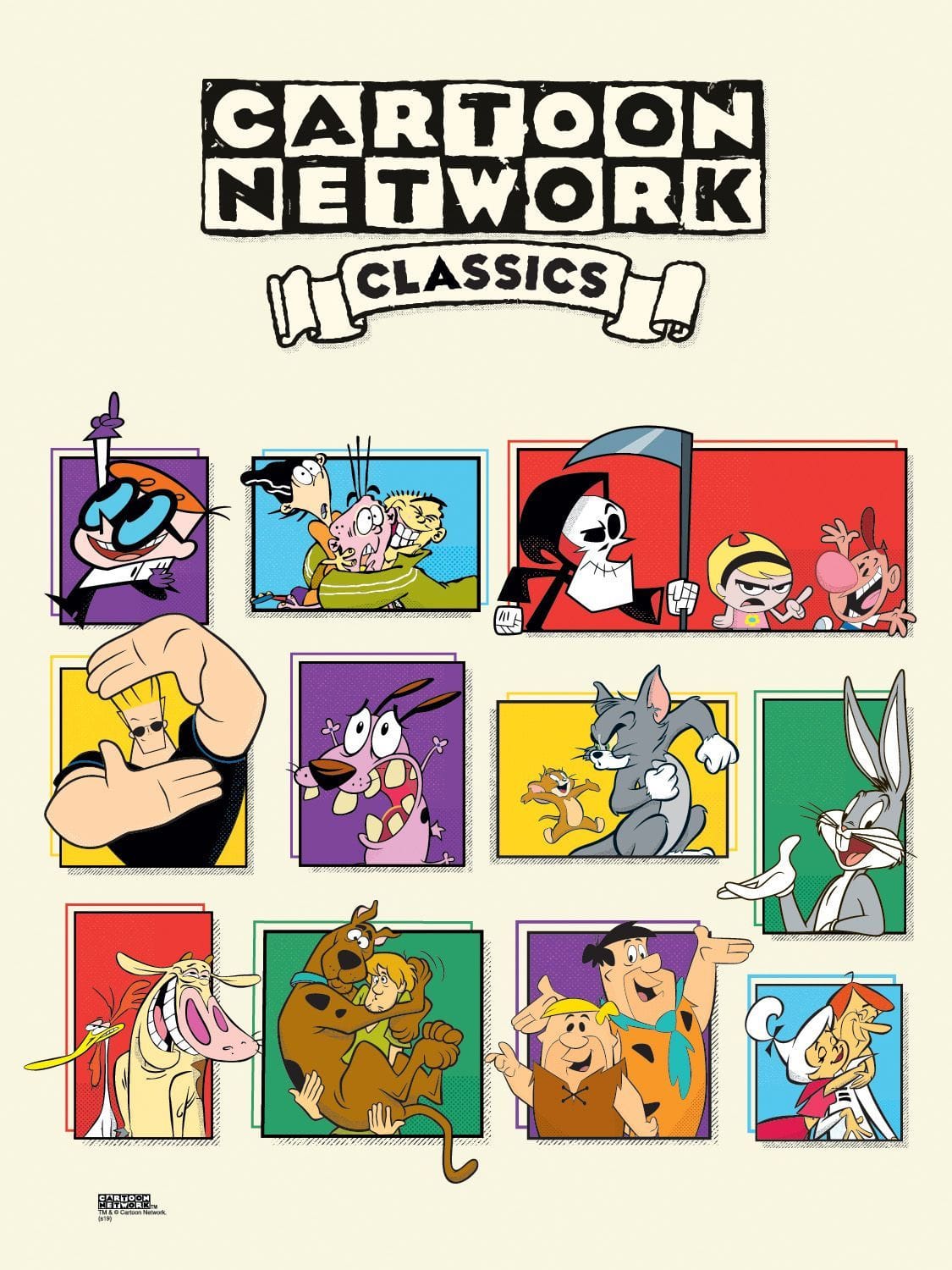
When you have this equation in mind, Cartoon Network is doing a stellar job.
Commissioned and custom illustration work might be more restrictive, but it’s no less creative. On the contrary, it’s the way you execute within certain bounds that creativity comes into play.
4. The importance of the environment
We’re not saying you must illustrate an entire world for your character. Unless that’s what the assignment asks for.
But you do need to envision this universe in your mind. Your character is not just a nice illustration to look at. It’s a person living in their world. And because of this world and how they interact with it, they are who they are.
The environment in which your character lives will further help cement believability in your creation, as well as a base for character design
That’s up to you. Some make up an entire universe before the character, some the other way around, while others do both simultaneously. We’re not helping?
Well, think of this: when you want to design a distinctive character, what’s the first thing that comes to mind—a person or a world? Go with your instinct when making design decisions, but don’t forget to build both.
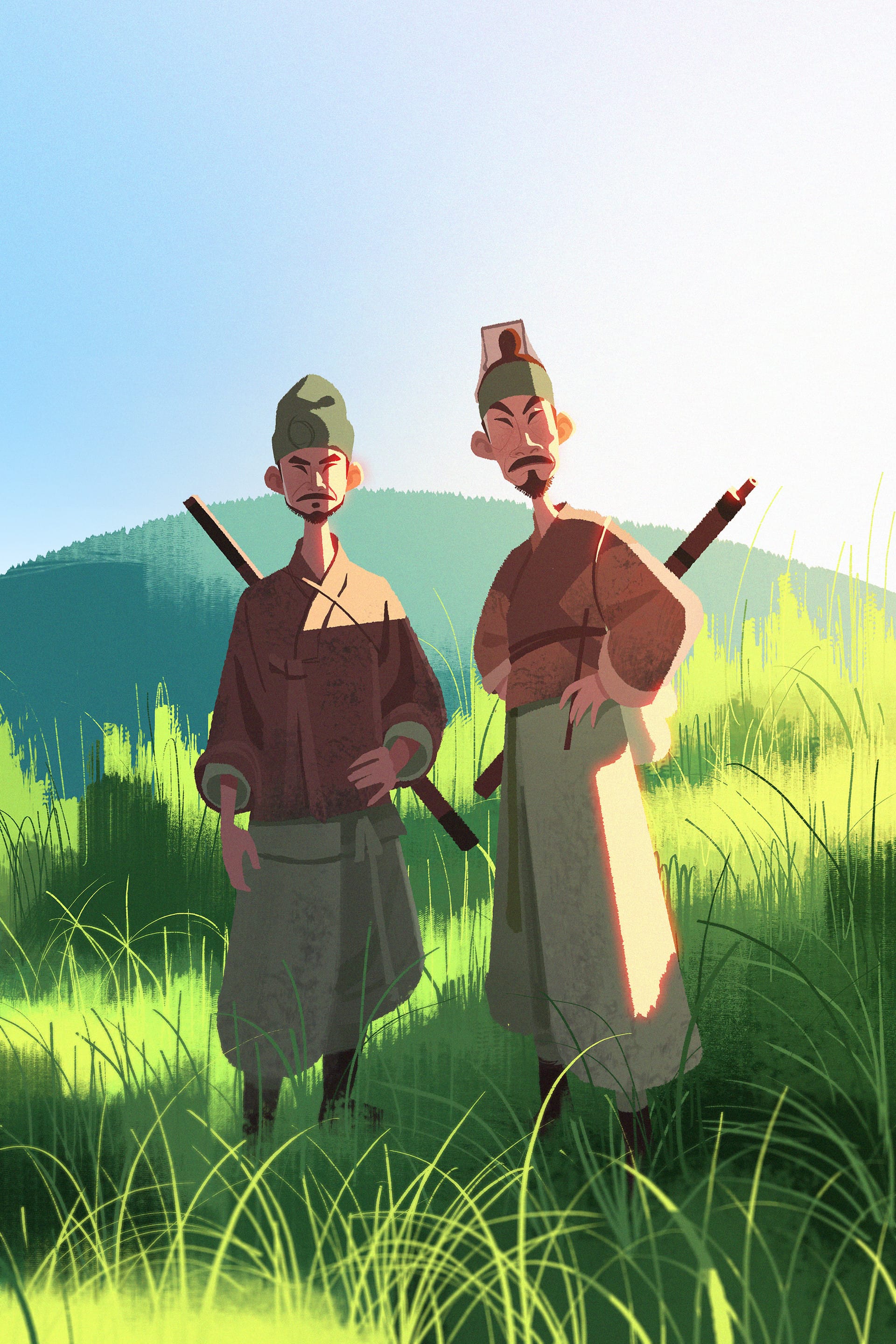
5. What’s your character's backstory?
Or, how did your character interact with their environment up until the moment you drew them?
The meta of it all, right?
But think about the fact that the characters existed before you even created them. There needs to be a reason for why your individual characters are who they are.
Answer these questions:
- Out of the whole universe of your character, where specifically do they come from?
- What life-changing events happened in their past?
- How did these events change your character?
- Who are their friends and family?
- Where do they live now?
- What’s their heritage?
- What’s their role in society?
You can get granular here, even down to what they eat. Don't get too lost in the weeds—as long as these questions help build your character and you’re having fun, there’s no harm done.
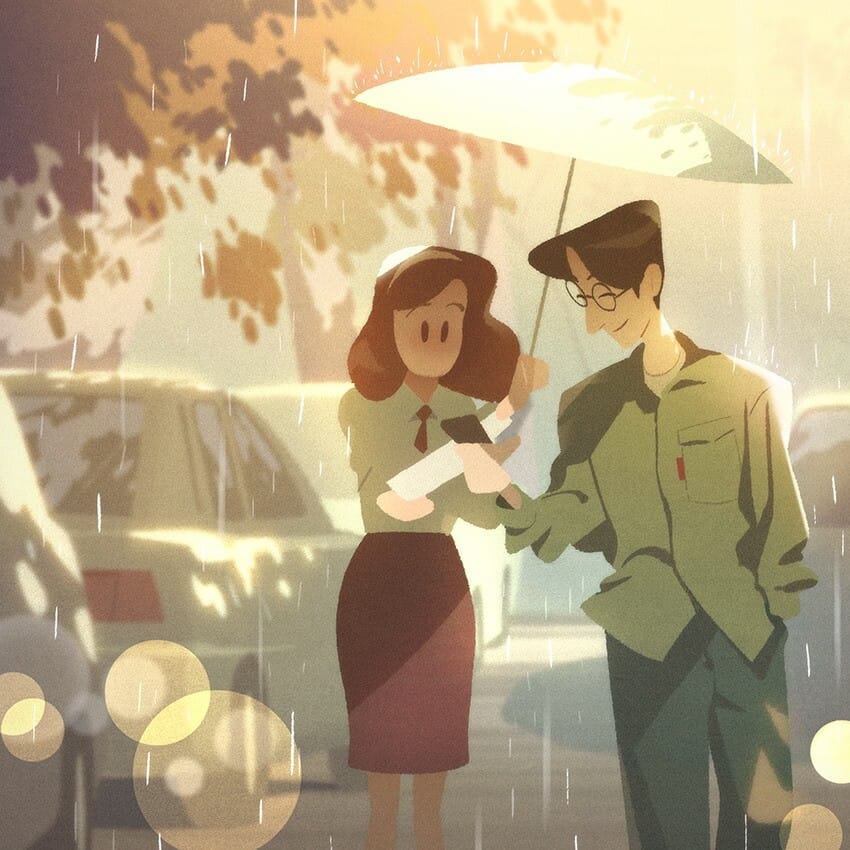
You might find that the backstory is more exciting than the character itself.
The answer to these questions will help solidify your character style and affect your character’s personality. Which we’ll talk about in a bit.
Goals, goals, goals
They’re the driving force behind your character’s traits and personality.
Often, it’s about something that’s missing. Privilege, money, love, Nemo. You can rely on some classic conflicts to create a dramatic thrust behind your complex character's actions.
The character’s past experiences can greatly influence their reaction to conflict. Traumatic events, past failures, or successes can all influence how they approach and resolve conflicts.
6. Give your character a fleshed-out personality
Your character’s personality will be an integral part of the story-telling, ultimately making your character memorable.
Don’t think your advanced drawing techniques will be enough—although they greatly help. Because people connect to personalities even more than they connect to beautiful designs.
A coherent personality reflected throughout your design will make people connect and relate to your character. And as a result, your character will matter to your viewers.
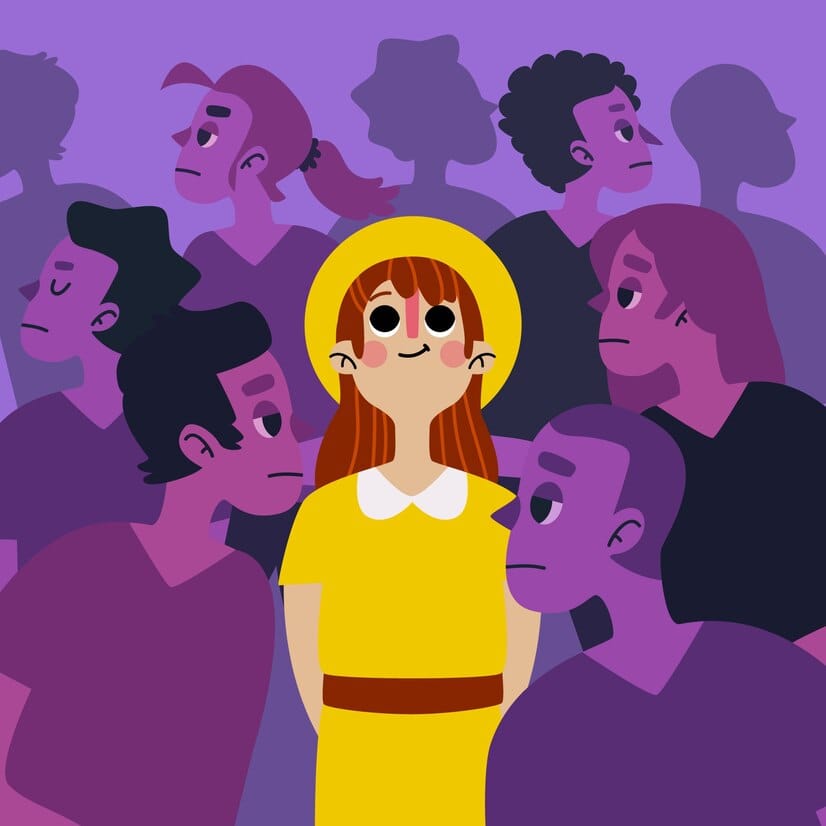
Your character’s personality traits are revealed through pose, facial features, basic body shape, and clothes. Figuring this part out will help you tremendously during the following steps.
So, ensure you understand your character’s traits before drawing your sketches. You should know your character so well that if your character walks into a party, you’ll recognize them immediately and anticipate their reactions.
Anyone should be able to identify your character out of a lineup, even if it's just a black-and-white outline.
Exaggerate
The simplest way to do that is to make use of exaggeration.
Try not to follow too closely to anatomical rules when creating your character features. By exaggerating your character's outward appearance, their personality will immediately shine through. And you are that much closer to making your character larger than life.
Don’t fear this will turn your character into a cartoon caricature. Depending on your project requirements, you can create exaggerations with varying degrees of intensity.
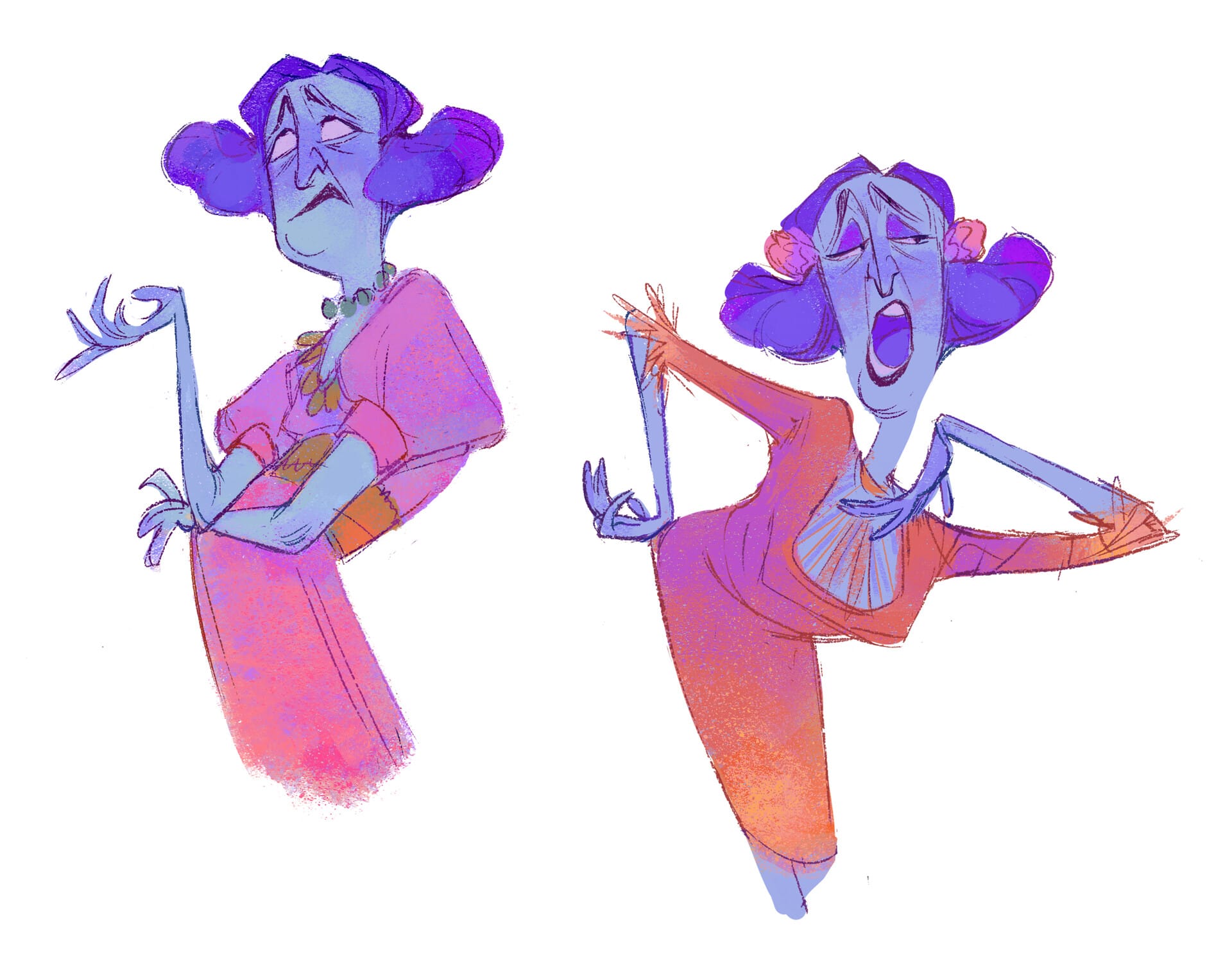
Identify the most unique or defining trait of your character and amplify it. If your character is wise, perhaps give them exaggeratedly large glasses or a profound, thoughtful expression.
Shape theory
Always consider shape theory. It plays an important role in the body movements of your characters.
Shape theory is a concept used in character design to communicate meaning based on shapes we are familiar with. Simple character shapes can tell a story, show personality, and trigger an emotional response in your audience without using words.
Circles and ovals, for example, are excellent for friendly characters. While square jaws, shoulders, and even hands give a feeling of strength, balance, and discipline. Triangular shapes are the sharpest of the basic shapes. You can end up with a menacing or evil character profile by exaggerating their angles, like Yzma from The Emperor's New Groove (2000) below:
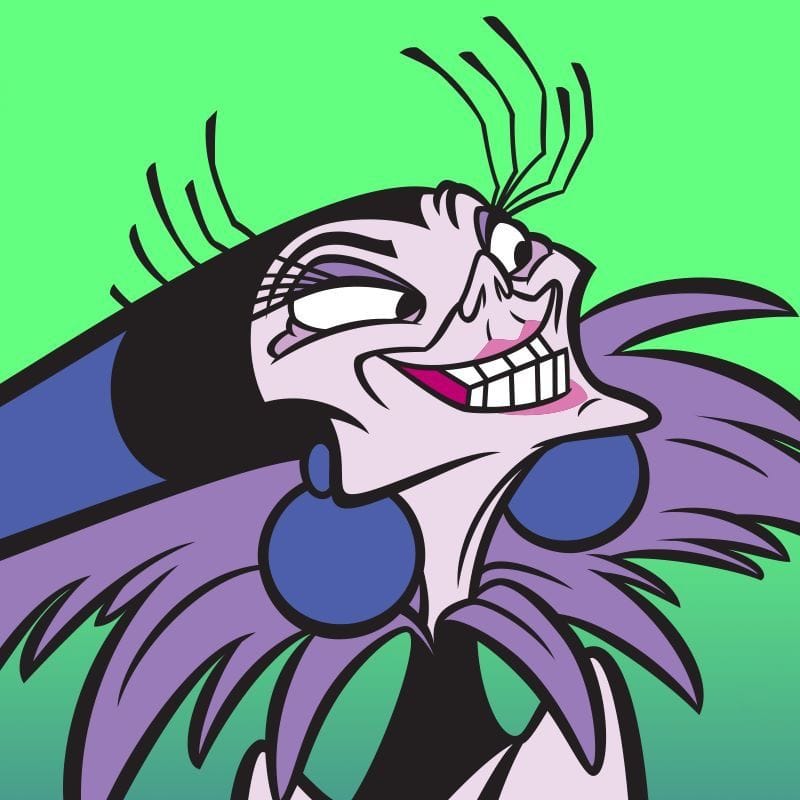
But that does not mean that you cannot use angular shapes in positive characters either. Warriors, for example, can have spikes on their clothes for protection. Or angular hair or facial structure because they are intellectually sharp and have expressive poses.
In the same vein, negative character illustrations can be built of rounded shapes to mislead your audience about the character's true intentions.
Clichés
While you should use shape theory with a grain of salt, it still gives you valuable insight into where to start.
Educational material tells you how to build your character idea. Did you know favorite characters like Bugs Bunny were based on the “Screwball” archetype? This archetype features an elongated head, exaggerated features, a bean-shaped body, a low forehead, and skinny legs.
This archetype is one of many developed by Preston Blair, a Disney and MGM cartoonist veteran who wrote the cartoon character design bible in 1947. He used the characters he created in his prolific career as references to exemplify how various archetypes, like the Screwball, the Cute, and the Goofy, can be drawn.
But while Blair’s guide is a fantastic point of reference, there aren’t many hard-and-fast rules on how to design your characters.
Certain types of character design styles come up again and again, like a princess with flowing golden locks. When you first sit and sketch your character, you’ll likely incorporate at least one cliché.
Push yourself to keep drawing and find imaginative ways to communicate your character's personality in your original drawing style.
Pose
Another great way to distinguish your character is by improving their key poses.
A simple way to check a character's pose is by turning your actual character into a silhouette—so making it fully black—and then you can check if some gestures or shapes can be pushed further to make it more iconic.
You could also experiment with the balance and weight distribution of the pose. A character leaning forward aggressively or balancing precariously can add a dynamic element, making the silhouette more interesting.
What can you simplify? Are there any elements overlapping? Ask yourself these questions and be truly critical when analyzing the silhouette and its feeling of movement.
See how many characters you can identify by their silhouettes in the image below:
Make sure important parts of the character, like the arms or legs, are not overlapping in a way that obscures their form in the silhouette. Each part of the character should be distinct.
7. Facial expressions
Even if you’re not creating an animated character, you must give them facial expressions and a range of emotions that align with their personality and further emphasize their traits and physical appearance.
Depending on the latter, you must choose between muted or wildly exaggerated expressions. Classic examples of exaggerated expressions can be found in the legendary cartoon SpongeBob SquarePants (1999).
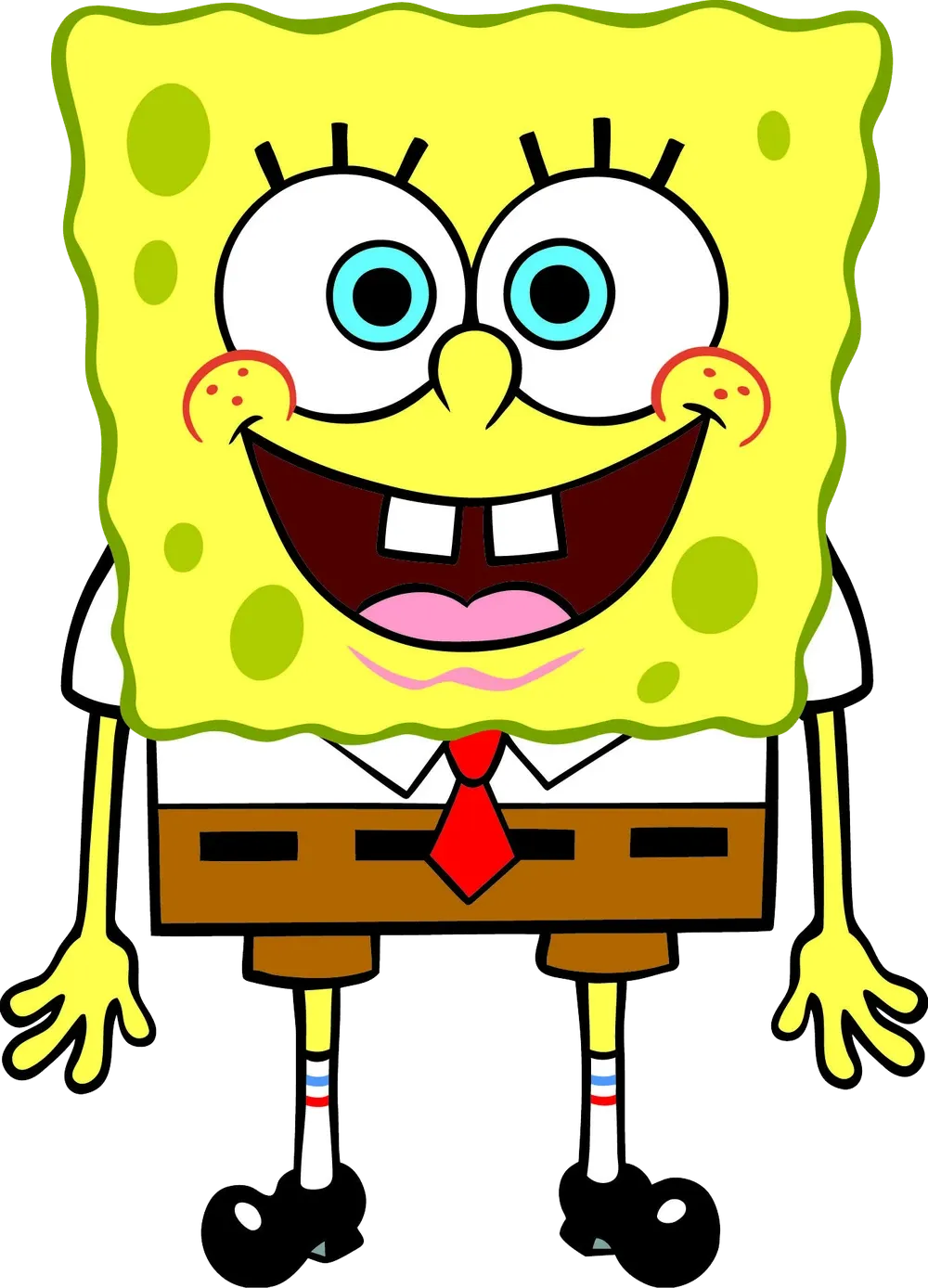
Eyes popping out of the character’s heads; jaws dropping left and right. But there are also very subdued expressions like those of anime characters like Saitama in One Punch Man, whose entire persona is built around deadpan reactions.
Play around until you get results that 'feel right.'
Do other character studies, but picking up a mirror is the quickest way to understand physical features and how a face moves in different situations. See how your muscles change the shape of your eyebrows, mouth corners, and eyes. This is the golden formula of emotional signals.
Also, a face isn’t 100% symmetrical. So, try to apply that to your design because it’ll make your character much more believable.
Hair, clothes, and accessories
Hair is one of the most difficult things to draw digitally, especially with vector graphics.
Many professional visual artists profess to have hated drawing hair at the beginning of their careers but now love the process instead.
While you may think you need to draw every strand, think of hair more like a large, organic shape that moves with the character and the environment. So, it’s a great way to show movement and energy in your piece. Treat hair like an important prop that tells the story.
Clothing and accessories serve the same purpose.
Just like you love to dress a certain way, so does your character. Their garments reflect their personality, and your stylistic choice will make them believable and relatable.
Want to learn more about designing with Linearity Curve?
Visit our Academy for free marketing and design courses.
If your character has a job, like Mario, he’ll look the part by wearing a uniform. If your character is a "wannabe normal teenager" like Jocasta (Maddy's character), she’ll wear clothing that will make her blend in.
Yet, notice that her hair’s an emerald green to hint at the fact that she’s, in fact, special.
When designing clothing styles and accessories, consider your character's cultural background story and their age, affiliation, and status. This will help you pull together the sense of who the character is.
Color theory
By understanding the basic rules of color psychology shows that people naturally associate dark colors with villains and mysterious types.
Light colors tend to be reserved for ‘the good guys,’ hero qualities, cute personalities, and pure intentions. However, don't be afraid to break with these clichés.
Combining a communicative silhouette and color choice is your ticket to designing an iconic character.
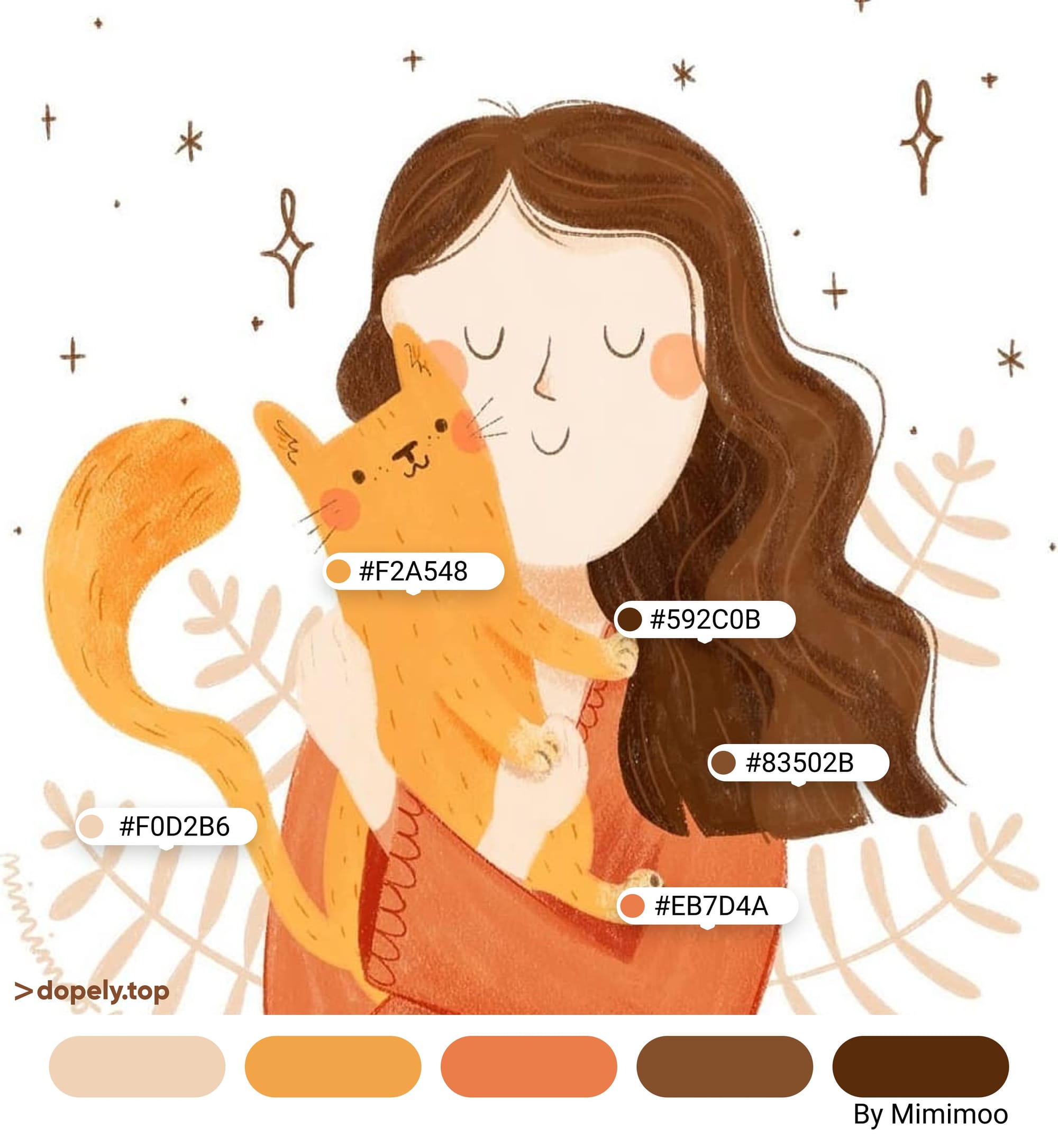
Be selective. Choose your main color, and add a limited palette that helps support it without competing.
Ensure your colors don’t blend into each other. The difference in value between colors should be high enough to be perceived as contrasting. You can do that by viewing your character in greyscale—if your greys look very similar, you can change the value of some of your colors.
Consider the evolution of the characters’ color palette and their story development. This can be a subtle way to reflect internal changes or growth in the character.
Finally, your character does not live in a void. Even if your background is not done yet, make it a mid-tone grey to understand how your lights and darks look against it.
Sketch
Your initial character design drawing should be a rough sketch outlining the general anatomy of your character.
This is when you keep working on your design and refining your exaggerations until you’re happy with the result and achieve a detailed sketch
Maddy likes using Procreate for this stage as it allows her much freedom in raster sketching, as if on a digital piece of paper. This is where she also identifies the light source and how it affects shadows and highlights.
Some artists also prefer to draw rough sketches of characters in thumbnail size and do multiple variations on the same canvas, focusing on the main shapes, sketches of movement, and gestures. Variety is what can help you decide in terms of what camera angle you are capturing and what tells the story best.
The point is to sketch out as many ideas as possible without thinking too much or being too critical of your execution. Because loose sketches can be cleaned up in the final step.
Finalize
After laying all this groundwork, we’re very close to the finish line.
The next step is finalizing your character's details and entire design. Your medium will vary depending on how you plan on using your type of character. A comic book artist might finalize their character with ink and colored pencils on paper.
But most designers today have turned to digital devices for their masterpieces. Vector-based programs like Linearity Curve and Adobe Illustrator are favorites, as your final piece will look crisp and high-quality regardless of medium or display size.
A well-elaborated sketch will make your character's digitization process or animation stage easier. In this step, you can simply trace your sketch with vectors.
After importing the sketch, Maddy prefers the Pencil Tool because it feels more like pen on paper and is easier to manipulate.
Once the outline is done, she moves to color, shading, light, and highlights, and finally, she adds the background, all on separate layers.
Let’s do a full recap: character design is one of the most important artistic skills you can learn as an illustrator.
We’ve touched on many principles to help you become a better character artist. While the process is similar to other disciplines (the ideation phase, the conception phase, the prototyping phase, and the testing phase until you get to the final design), what makes character design flexible is that it allows your imagination to run wild.
So, have fun in the process. Remember the backstory, characters' colors, and character motivation. And pick the right tools for the job.
You can download Linearity Curve for free to get started. Practice these character design tips, and tag us on social when you bring your character to life.
Jumpstart your ideas with Linearity Curve
Take your designs to the next level.
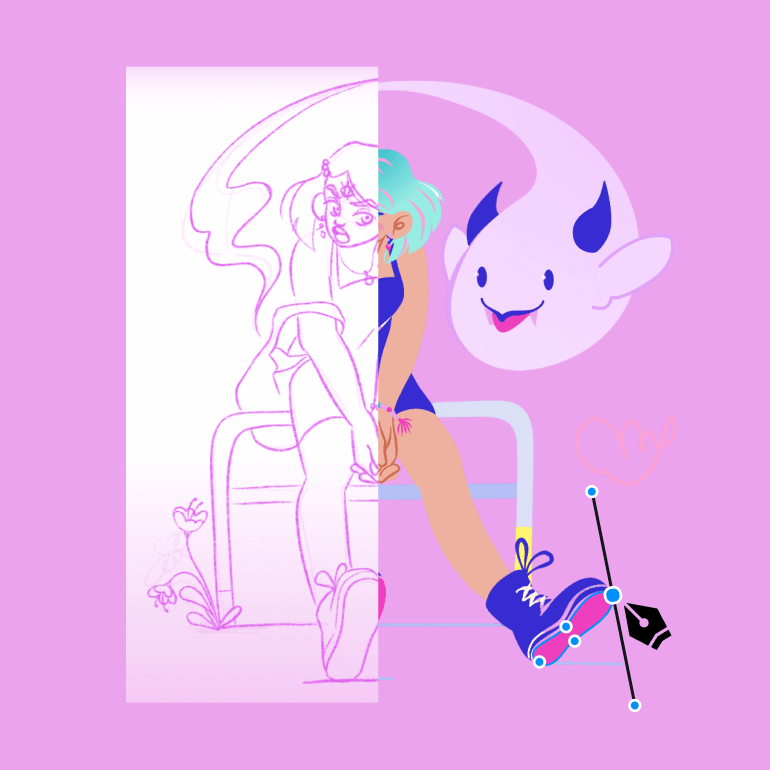
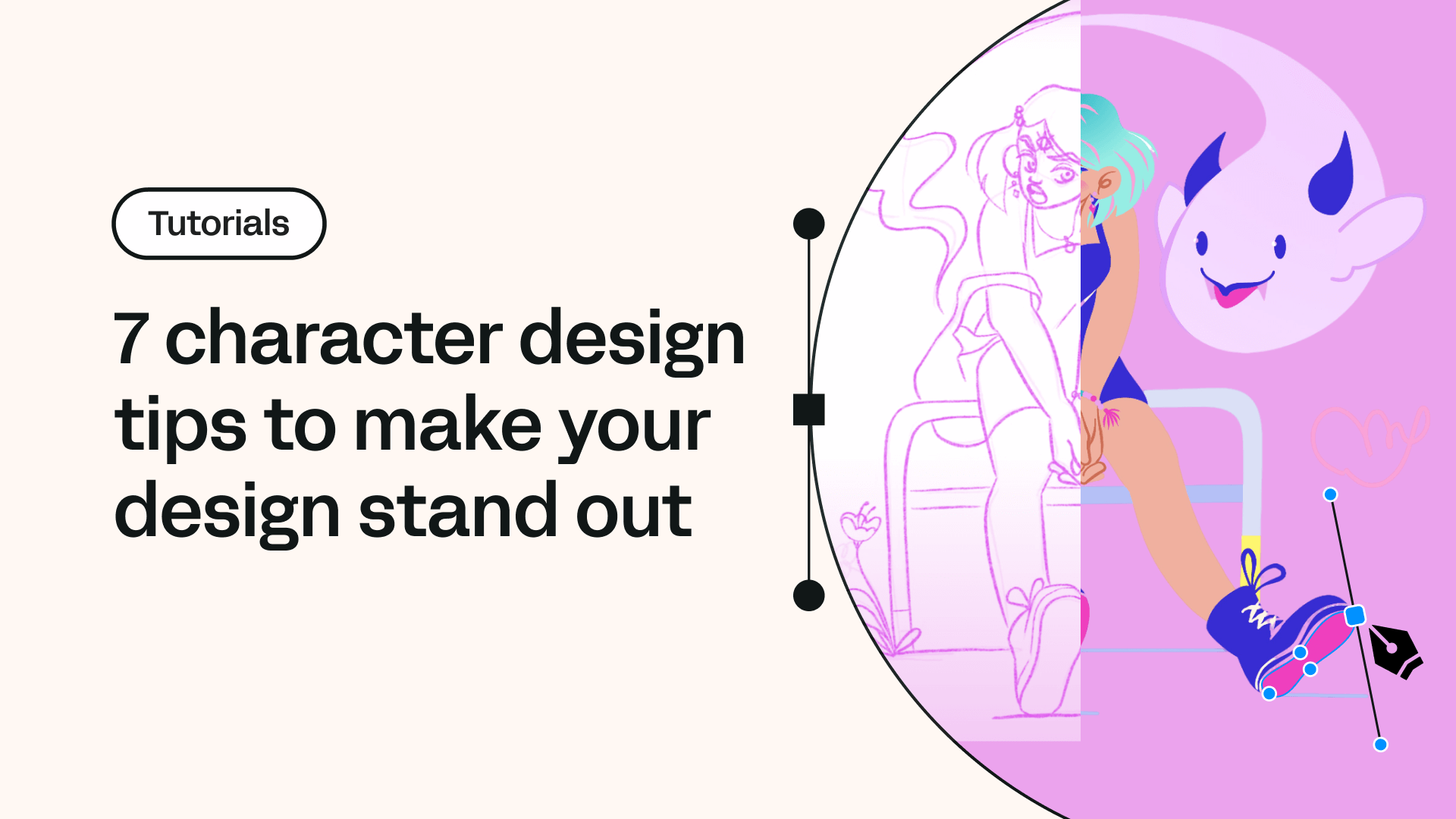
Share this!
Lavinia Aparaschivei
Lavinia is a contributing writer to the Linearity Blog.


:quality(75))
:quality(75))



:quality(75))
